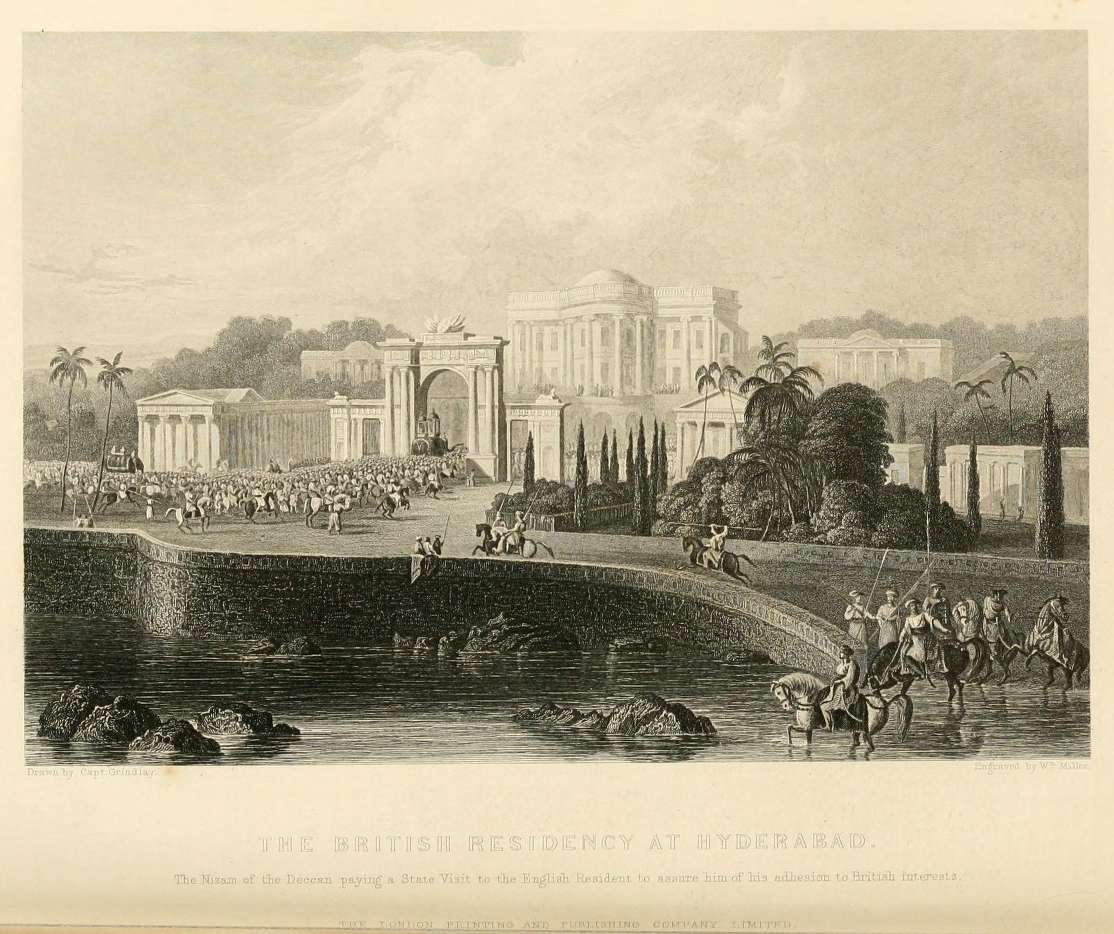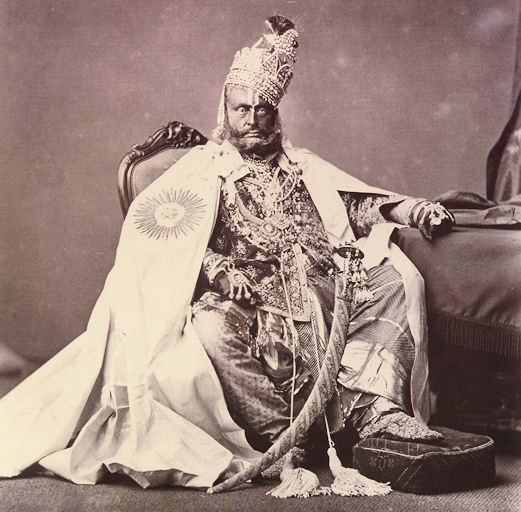|
Indore Residency
Indore was one of the residencies of British India. Indore Residency included most of Indore State, and, after 1933, Rewa State, which formerly belonged to Bagelkhand Agency. It was part of Central India Agency The Central India Agency was created in 1854, by amalgamating the Western Malwa Agency with other smaller political offices which formerly reported to the Governor-General of India. The agency was overseen by a political agent who maintained .... British Residents List of British Residents of the Indore Residency. *1840 - 1844 Sir Claude Martin Wade (b. 1794 - d. 1861) *1845 - 1859 Robert North Collie Hamilton (b. 1802 - d. 1887) *1859 - 1861 Sir Richmond Campbell Shakespear (b. 1812 - d. 1861) *1861 - 1869 Richard John Meade (b. 1821 - d. 1899) *1869 - 1881 Henry D. Daly *1881 - 1888 Henry Lepel-Griffin (b. 1838 - d. 1908) *188 ... [...More Info...] [...Related Items...] OR: [Wikipedia] [Google] [Baidu] |
Residencies Of British India
The Residencies of British India were political offices, each managed by a Resident, who dealt with the relations between the Government of India and one or a territorial set of princely states. History The Residency system has its origins in the system of subsidiary alliances devised by the British after the Battle of Plassey in 1757, to secure Bengal from attack by deploying East India Company troops of the Bengal Army within friendly Native States. Through this system, the Indian Princes of these Native States were assured of protection from internal or external aggression, through deployment of company troops. In return they had to pay for the maintenance of those troops and also accept a British Resident in their court. The Resident was a senior British official posted in the capital of these Princely States, technically a diplomat but also responsible for keeping the ruler to his alliance.Metcalf, Barbara D., and Thomas R. Metcalf, ''A Concise History of India'' (Cambridge ... [...More Info...] [...Related Items...] OR: [Wikipedia] [Google] [Baidu] |
Indore State
Indore State, also known as Holkar State, was a kingdom in India. Its rulers belonged to the Holkar dynasty. After 1857, Indore became a 19-gun salute Maratha princely state (a rare high rank) under the British Raj. Indore state was located in the present-day Indian state of Madhya Pradesh. The capital of the state was the city of Indore. The state had an area of 24,605 km2 and a population of 1,325,089 in 1931. Other important towns besides Indore were Rampura, Khargone, Maheshwar, Mehidpur, Barwaha, and Bhanpura; there were a total of 3,368 villages. History By 1720, the headquarters of the local ''pargana'' (an Indian local administrative unit) was transferred from Kampel to Indore due to the increasing commercial activity in the city. On 18 May 1724, the ''Nizam'' accepted the rights of the Maratha Peshwa Baji Rao I to collect ''chauth'' (taxes) from the area. In 1733, the ''Peshwa'' assumed full control of Malwa and appointed his commander Malhar Rao Ho ... [...More Info...] [...Related Items...] OR: [Wikipedia] [Google] [Baidu] |
Rewa State
Rewa State, also known as Rewah, was a Rajput princely state of India, surrounding its eponymous capital, the town of Rewa. With an area of about , Rewa was the largest princely state in the Bagelkhand Agency and the second largest in Central India Agency. Rewa was also the third wealthiest principality in Central India, with an average revenue of rupees 2.9 million in 1901. The Bagelkhand Agency was dissolved in 1933, following which Rewa was placed under the authority of the Indore Residency. Rewah state had a 15 gun salute. History According to legend, the kingdom of Rewa was founded around 1140 CE. On 5 October 1812, it became a British protectorate. Between 1 April 1875 and 15 October 1895, Rewa remained under the direct colonial administration of British India. The ruler of Rewa ruled from Bandhavgarh during the founding reign of Raja Vyaghra Dev, who was a direct descendant of Gujarati warrior king Vir Dhawal. In 1617, Maharaja Vikramaditya Singh moved his capi ... [...More Info...] [...Related Items...] OR: [Wikipedia] [Google] [Baidu] |
Bagelkhand Agency
The Bagelkhand Agency was a British political unit which managed the relations of the British with a number of autonomous princely states existing outside British India, namely Rewa and 11 minor states, of which the most prominent were Maihar, Nagod and Sohawal. Other principalities included Jaso, Kothi, Baraundha (aka Patharkachhar) as well as the Kalinjar Chaubes, consisting of the princely estates of Paldeo, Kamta-Rajaula, Taraon, Pahra and Bhaisaunda.Malleson, G. B. ''An historical sketch of the native states of India,'' London 1875, Reprint Delhi 1984 History The Agency was established in March 1871 and was named after the Bagelkhand region. From 1871 to 1933 the Agency was under the political supervision of the Governor-General of India's Agent for Central India, and under the direct supervision of a political Agent residing ordinarily at Satna The total area was , and the population in 1901 was 1,555,024, a decrease of 11% over the previous census ten years before, large ... [...More Info...] [...Related Items...] OR: [Wikipedia] [Google] [Baidu] |
Central India Agency
The Central India Agency was created in 1854, by amalgamating the Western Malwa Agency with other smaller political offices which formerly reported to the Governor-General of India. The agency was overseen by a political agent who maintained British relations with the princely states and influence over them on behalf of the Governor-General. The headquarters of the agent were at Indore. List of Divisions and Princely States/districts of Agency Bundelkhand Agency : Bundelkhand Agency was bounded by Bagelkhand to the east, the United Provinces to the north, Lalitpur District to the west, and the Central Provinces to the south. Bagelkhand Agency was separated from Bundelkhand in 1871. In 1900 it included 9 states, the most important of which were Orchha, Panna, Samthar, Charkhari, Chhatarpur, Datia, Bijawar and Ajaigarh. The agency also included 13 estates and the ''pargana'' of Alampur, the latter belonging to Indore State. In 1931, all of the states under the Baghelkhand ... [...More Info...] [...Related Items...] OR: [Wikipedia] [Google] [Baidu] |
James Kaye (cricketer)
James Levett Kaye (27 December 1861 – 17 November 1917) was an English first-class cricketer and an officer in both the British Army and the British Indian Army. The son of James Kaye and Elizabeth Thoroton, he was born at Potters Bar in December 1861. He was educated at Winchester College, playing for the college cricket team for three years, in addition to representing the college at racquets. From Winchester, Kaye proceeded to the Royal Military College, Sandhurst. He graduated from there into the Royal Berkshire Regiment as a lieutenant in September 1882. Prior to his graduation, he made a single appearance in first-class cricket for Hampshire against the Marylebone Cricket Club at Lord's in 1881. Playing as a wicket-keeper and opening batsman, he was dismissed for 3 runs in Hampshire's first innings by Wilfred Flowers, while in their second innings he was dismissed for 11 runs by Arnold Rylott; as wicket-keeper, he made a single stumping. With the Berkshire Re ... [...More Info...] [...Related Items...] OR: [Wikipedia] [Google] [Baidu] |
Residencies Of British India
The Residencies of British India were political offices, each managed by a Resident, who dealt with the relations between the Government of India and one or a territorial set of princely states. History The Residency system has its origins in the system of subsidiary alliances devised by the British after the Battle of Plassey in 1757, to secure Bengal from attack by deploying East India Company troops of the Bengal Army within friendly Native States. Through this system, the Indian Princes of these Native States were assured of protection from internal or external aggression, through deployment of company troops. In return they had to pay for the maintenance of those troops and also accept a British Resident in their court. The Resident was a senior British official posted in the capital of these Princely States, technically a diplomat but also responsible for keeping the ruler to his alliance.Metcalf, Barbara D., and Thomas R. Metcalf, ''A Concise History of India'' (Cambridge ... [...More Info...] [...Related Items...] OR: [Wikipedia] [Google] [Baidu] |
1840 Establishments In British India
__NOTOC__ Year 184 ( CLXXXIV) was a leap year starting on Wednesday (link will display the full calendar) of the Julian calendar. At the time, it was known as the Year of the Consulship of Eggius and Aelianus (or, less frequently, year 937 ''Ab urbe condita''). The denomination 184 for this year has been used since the early medieval period, when the Anno Domini calendar era became the prevalent method in Europe for naming years. Events By place China * The Yellow Turban Rebellion and Liang Province Rebellion break out in China. * The Disasters of the Partisan Prohibitions ends. * Zhang Jue leads the peasant revolt against Emperor Ling of Han of the Eastern Han Dynasty. Heading for the capital of Luoyang, his massive and undisciplined army (360,000 men), burns and destroys government offices and outposts. * June – Ling of Han places his brother-in-law, He Jin, in command of the imperial army and sends them to attack the Yellow Turban rebels. * Winter – Zha ... [...More Info...] [...Related Items...] OR: [Wikipedia] [Google] [Baidu] |

_in_Indore%2C_MP_(5102818067).jpg)


